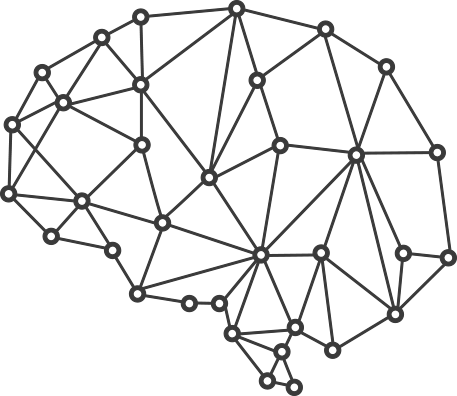Deep transcranial magnetic stimulation (dTMS) is revolutionizing the way we approach treatment for mental health disorders. This new therapy is non-invasive and uses magnetic fields to stimulate nerve cells in the brain at a deeper level than other brain stimulation treatments. By reaching these deeper areas of the brain that are responsible for regulating mood and behavior, dTMS offers hope to those who have not found success with conventional treatments.
What is Deep TMS?
Deep TMS is a non-invasive, brain stimulating treatment based on the technology of repetitive transcranial magnetic stimulation (rTMS). By positioning a device with magnetic coils near the head, it activates deeper brain regions than traditional TMS. Clinicians are also able to adjust the depth of stimulation by changing the intensity or altering the coil’s proximity to the skull.
Conditions Deep TMS Can Treat
Based on various studies and extensive research, dTMS is an effective treatment option for a variety of disorders. It’s been approved by the Food and Drug Administration (FDA) to treat the following conditions:
- Major depressive disorder (MDD) or treatment-resistant depression
- Migraine with aura
- Obsessive-compulsive disorder (OCD)
- Smoking cessation (OCD)
- Anxiety that is associated with MDD (OCD)
Standard TMS vs. Deep TMS
Deep TMS and standard TMS are both used to stimulate the brain, but they do so in different ways, such as using different coil types and stimulating different areas of the brain. Here’s a breakdown:
|
Feature |
Standard TMS |
Deep TMS |
|
Coil Type |
Figure-8 coils |
H-coils |
|
Stimulation Depth |
Superficial brain layers |
Deeper brain regions |
|
Stimulation Area |
Small, specific area |
Larger and broader brain regions |
|
Target Region |
Left dorsolateral prefrontal cortex (DLPFC) |
Prefrontal cortex and subcortical regions associated with the reward system |
|
Stimulation Intensity |
Lower and more focused |
Higher and less focused (while still reaching greater depths) |
|
Primary Use |
MDD, OCD, migraines, and smoking cessation, as well as other psychiatric disorders like PTSD |
MDD, OCD, migraines, and smoking cessation, as well as other psychiatric disorders like PTSD |
|
Effect on Brain Pathways |
Influences pathways connected to the left DLPFC and subgenual anterior cingulate (sgACC) |
Influences broader networks within the prefrontal cortex and deeper brain structures |
How Does Deep TMS Affect the Brain?
Deep TMS applies repetitive magnetic pulses to modulate neural activity, which facilitates the restoration and maintenance of brain functions. This treatment not only targets the superficial brain layers like standard TMS, but it also targets deeper regions within the brain.
Mental health conditions like depression, anxiety, and OCD often occur when the brain’s neural circuits are imbalanced. These imbalances may present as overactivity or underactivity in the brain, or as disruptions in the communication between different areas of the brain. Deep TMS helps to recalibrate these circuits by improving their functionality.
While standard TMS can only go up to 0.7 cm in the brain, Deep TMS can reach as deep as 3.2 cm into the brain, allowing it to have a greater influence on brain areas responsible for emotional regulation and cognitive processes. These areas include the prefrontal cortex, anterior cingulate cortex (ACC), hippocampus, amygdala, insula, salience network and the default mode network (DMN), all of which play a role in mood disorders and treatment resistance.
Risks and Side Effects of Deep TMS
Like any medical treatment, dTMS does come with potential risks and side effects. Common side effects include:
- Application site discomfort or pain
- Muscle twitching
- Headache and back pain
- Lightheadedness or dizziness
- Insomnia
While rare, the following serious side effects can occur:
- Seizures, although some studies show similar risk levels compared to rTMS and standard antidepressant medications
- Suicidal ideation or attempts
- Permanent hearing loss or tinnitus if ear protection is not used or falls out
Deep TMS is not suitable for everyone. It is contraindicated for those with:
- Metal implants in or around the head
- Aneurysm clips or coils
- Cochlear implants
- Pacemakers
- Vagus nerve stimulators
- Implantable cardioverter-defibrillators
Patients considering deep TMS should have a discussion with their healthcare provider to determine if this treatment is appropriate. It’s also important to discuss the potential risks of dTMS if you are pregnant, as the effects during pregnancy are still not well understood.
How Does Deep TMS Affect the Brain?
dTMS offers a range of benefits for treating a variety of disorders. These include:
- Targets deeper brain areas more effectively
- Pinpoints treatment areas with greater accuracy
- Less disruptive to the brain’s outermost layers, reducing side effects
- Significantly reduces depression symptoms based on a study of individuals who underwent 36 sessions of deep TMS
- Enhances the effectiveness of antidepressant medications
- Boosts cognitive functions
- Results in fewer side effects
Who Might Benefit From Deep TMS?
If you’ve struggled to find effective treatment options for your condition, deep TMS could be an alternative worth considering. It may be beneficial for people who:
- Are diagnosed with a condition that dTMS is proven to treat
- Haven’t found relief with multiple antidepressants
- Suffer from negative side effects due to antidepressant medications
What Can You Expect During a Deep TMS Session?
Since deep TMS is a non-invasive treatment that doesn’t require anesthesia or downtime, you’re able to return to your daily routine following a session. The treatment is designed to be less disruptive, making it a convenient option for those looking for relief from certain conditions. Here’s what you can expect.
What Can You Expect During a Deep TMS Session?
The specific frequency and duration of deep TMS treatments will likely depend on your condition and your doctor’s recommendations. However, a typical course of treatment lasts 4-6 weeks with daily 20-minute sessions, 5 days a week.
How to Prepare for Your First Session
Preparing for your first deep TMS session can help enhance its effectiveness and your comfort. Here are some tips to get you ready:
- Ensure adequate sleep to help regulate your mood and keep you alert
- Stay hydrated and eat well to reduce the likelihood of side effects
- Practice relaxation techniques like deep breathing or yoga to help you relax
- Avoid substances like alcohol and caffeine which can affect your brain’s chemistry
- Limit physical activity before the session to prevent elevated adrenaline levels
It’s also important to communicate with your doctor about any concerns or questions you may have about the treatment. This can help manage expectations and reduce any anxiety or uncertainty you may be feeling before the procedure.
Reach Out to Pulse TMS to See If Deep TMS is Right For You
Deep TMS is a promising alternative for those who haven’t found relief with traditional treatments. By targeting deeper areas of the brain, it helps improve symptoms of depression, anxiety, OCD, and more, with minimal side effects. If you’re looking for a non-invasive way to manage your condition, dTMS might be the answer.
Are you ready to take a step towards better mental health? Contact Pulse TMS today to learn more about how deep TMS can help you. Our team is here to answer your questions and guide you through your options.
Sources:
- A visual and narrative timeline of US FDA milestones for Transcranial Magnetic Stimulation (TMS) devices – Brain Stimulation Journal
- Figure-Eight Coils for Magnetic Stimulation: From Focal Stimulation to Deep Stimulation – Frontiers in Human Neuroscience
- Deep TMS H1 Coil treatment for depression: Results from a large post-marketing data analysis – Psychiatry Research
- A systematic review and meta-analysis of neuromodulation therapies for substance use disorders – Neuropsychopharmacology
- The neurobiology of treatment-resistant depression: A systematic review of neuroimaging studies – Neuroscience & Biobehavioral Reviews
- Deep transcranial magnetic stimulation for adolescents with treatment-resistant depression: A preliminary dose-finding study exploring safety and clinical effectiveness – Journal of Affective Disorders
- Deep transcranial magnetic stimulation alters resting-state neurophysiological traits in major depressive disorder – Journal of Affective Disorders
- A pilot study of accelerated deep transcranial magnetic stimulation effects on cognitive functioning in patients diagnosed with treatment-resistant major depressive disorder – Psychiatry Research
Let’s Discuss Treatment Options.



